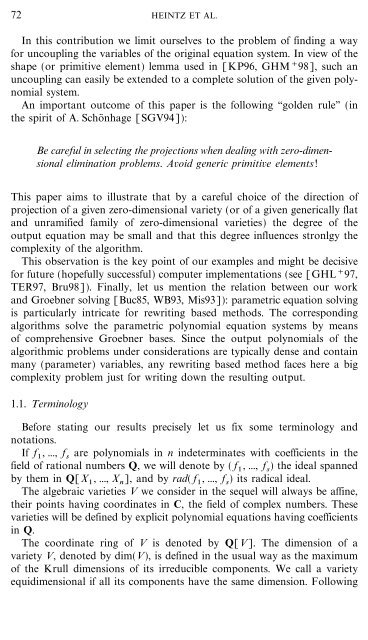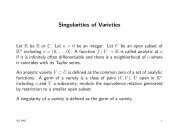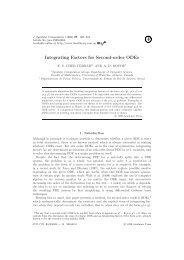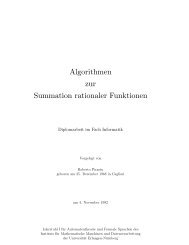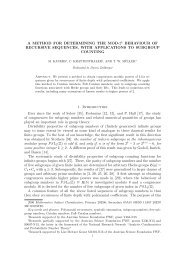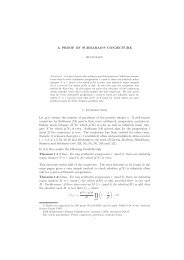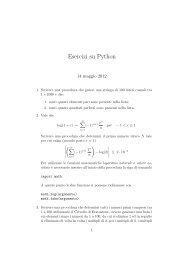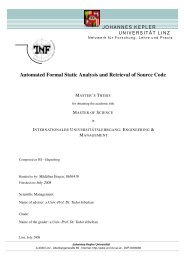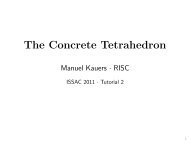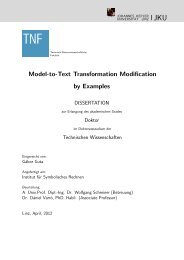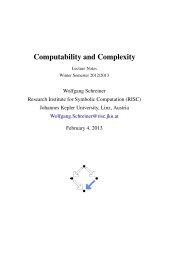Deformation Techniques for Efficient Polynomial Equation ... - RISC
Deformation Techniques for Efficient Polynomial Equation ... - RISC
Deformation Techniques for Efficient Polynomial Equation ... - RISC
Create successful ePaper yourself
Turn your PDF publications into a flip-book with our unique Google optimized e-Paper software.
72 HEINTZ ET AL.<br />
In this contribution we limit ourselves to the problem of finding a way<br />
<strong>for</strong> uncoupling the variables of the original equation system. In view of the<br />
shape (or primitive element) lemma used in [KP96, GHM + 98], such an<br />
uncoupling can easily be extended to a complete solution of the given polynomial<br />
system.<br />
An important outcome of this paper is the following ``golden rule'' (in<br />
the spirit of A. Scho nhage [SGV94]):<br />
Be careful in selecting the projections when dealing with zero-dimensional<br />
elimination problems. Avoid generic primitive elements!<br />
This paper aims to illustrate that by a careful choice of the direction of<br />
projection of a given zero-dimensional variety (or of a given generically flat<br />
and unramified family of zero-dimensional varieties) the degree of the<br />
output equation may be small and that this degree influences stronlgy the<br />
complexity of the algorithm.<br />
This observation is the key point of our examples and might be decisive<br />
<strong>for</strong> future (hopefully successful) computer implementations (see [GHL + 97,<br />
TER97, Bru98]). Finally, let us mention the relation between our work<br />
and Groebner solving [Buc85, WB93, Mis93]): parametric equation solving<br />
is particularly intricate <strong>for</strong> rewriting based methods. The corresponding<br />
algorithms solve the parametric polynomial equation systems by means<br />
of comprehensive Groebner bases. Since the output polynomials of the<br />
algorithmic problems under considerations are typically dense and contain<br />
many (parameter) variables, any rewriting based method faces here a big<br />
complexity problem just <strong>for</strong> writing down the resulting output.<br />
1.1. Terminology<br />
Be<strong>for</strong>e stating our results precisely let us fix some terminology and<br />
notations.<br />
If f 1 , ..., f s are polynomials in n indeterminates with coefficients in the<br />
field of rational numbers Q, we will denote by ( f 1 , ..., f s ) the ideal spanned<br />
by them in Q[X 1 , ..., X n ], and by rad( f 1 , ..., f s ) its radical ideal.<br />
The algebraic varieties V we consider in the sequel will always be affine,<br />
their points having coordinates in C, the field of complex numbers. These<br />
varieties will be defined by explicit polynomial equations having coefficients<br />
in Q.<br />
The coordinate ring of V is denoted by Q[V]. The dimension of a<br />
variety V, denoted by dim(V), is defined in the usual way as the maximum<br />
of the Krull dimensions of its irreducible components. We call a variety<br />
equidimensional if all its components have the same dimension. Following


